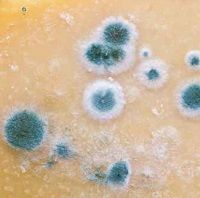Article
CDC Sees Bogus Mold Testing
Author(s):
Fears about toxic mold have spawned unqualified and useless testing, both of buildings and people, the US Centers for Disease Control and Prevention says. In a case history of an incident last year, Melody Kawamoto and Elena Page MD describe a costly case that yielded no proof of mold.

Fears about toxic mold have sometimes spawned useless testing, both of buildings and people, the US Centers for Disease Control and Prevention says. The implication for practioners is that they should be aware that patients may have sought unrecognized direct-to-consumer laboratory tests of questionable diagnostic value.
In a case history of an incident last year, Melody Kawamoto and Elena Page MD describe a costly case that yielded no proof of mold.
The story involved a woman who had taken a “prolonged absence” from work for symptoms she said involved multiple organs. After an online search she decided her problems might be due to exposure to mold and she found a company that offered to test her urine for exposure to mold.
The authors note that the laboratory then tested for mycotoxins—metabolites of some fungi. These organisms are commonly found in many foods and in the urine of healthy people. “Mycotoxin levels that predict disease have not been establish,” the researchers wrote, “Urine mycotoxin tests are not approved by the FDA for accuracy or for clinical use.”
Nevertheless, the laboratory report found informed the woman that she had “an unusually high level of mycotoxins present." It also referred her to a clinic that advertised it specialized in treating mold exposure and where practitioners prescribed questionable treatments. Those included giving her a prescription for an antifungal medication. The authors note that these medications “are used to treat fungal infections, not illnesses caused by toxins produced by fungi.” Further, she was advised to eat only canned chicken and rice for 3 days.
Web sites offering advice on mold exposure theorize that mold needs to be "starved" in the body and that people who fear they have been exposed should avoid eating any foods that mold can grow on. She was also told to try other nonstandard treatments, like “bowel evacuation or hydrocolonic irrigation cupping therapy, an ionic nasal spray,” the authors wrote.
The woman returned to work. At that point, her union demanded that the work site be tested for mold. Word spread among other employees who then began reporting that they thought they might have been exposed to toxic mold.
The remediation involved removing drywall, carpet and ceiling tiles in the worker’s office, at a cost to them employer of $25,000, the authors wrote.
No visible signs of mold or moisture were found.
In concluding its cautionary tale, the researchers noted that “persons using direct-to-consumer laboratory tests that have bot been approved by the FDA for iagnositc purposes, and their health care providers, need to understand that these tests might not be valid or clinically useful.
To check for mold, the CDC says visual inspection should be the first step and that difficult to examine spaces can be tested with a borescope to make a small hole. Moisture meters can measure the degree of wetness in building materials.
The CDC also recommends that when workers have concerns about mold exposure they should contact their union (if they have one) the step that led to the apparently unncessary destruction of the woman's office.





